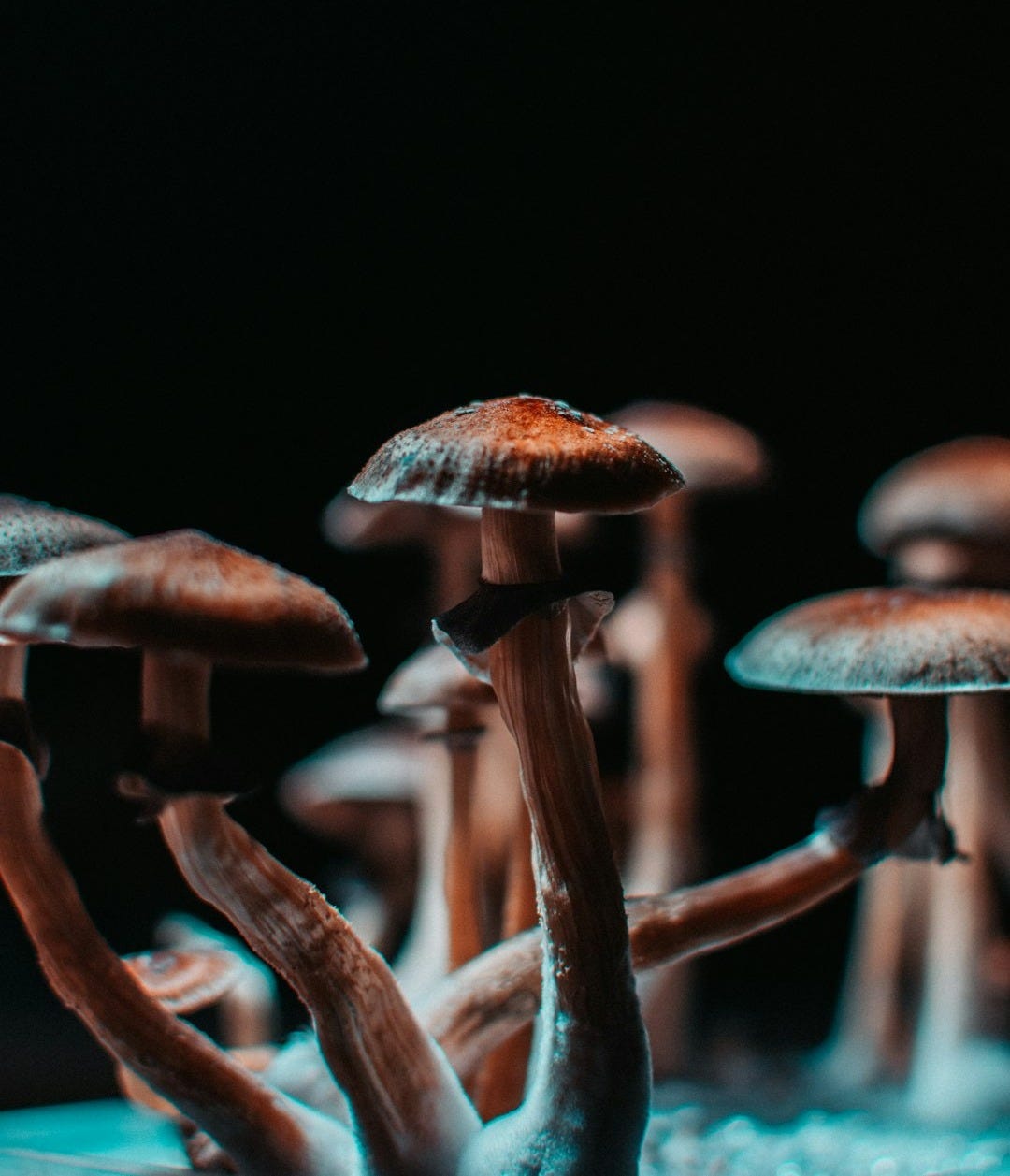Exotic Psilocybin Mushroom Species Reviews Part I: Echelons (minimal spoilers)
My subjective rankings of a variety of psilocybin mushroom species
Different species of psilocybin mushrooms produce distinctive trips. This has been true to such a degree in one particular case that the first time I tried it, if I didn’t know better, I would’ve sworn it was a different substance altogether. I believe that science will eventually catch up and support what exotic cultivators have known for years: not all mushrooms are equal.
Skeptics claim that psilocybin is psilocybin, and the subjective effects from one mushroom to another are simply due to differences in potency rather than any pharmacological difference from one species to the next. I believe that anyone who holds this belief has not sampled many species of psychedelic mushrooms (and note that I am speaking about species of mushrooms, not strains - it is perhaps true that most of the various psilocybe cubensis strains available, such as Golden Teacher, Amazonian, B+, and so on, are more or less interchangeable with each other.)
After I grew my first cubensis, I became curious about Psilocybe ochraceocentrata. I read reports on the Internet claiming that the experience provided by this species was more euphoric, positive, and “better” than that of Ps. cubensis. Being a novice at the time, I could hardly imagine what this even meant, but I was curious, so I purchased a culture of this species and cultivated it. My first experience with ochraceocentrata was indeed very different, and not at all what I expected. I proceeded to grow several other species and try them too.
At this point, I need to make a disclaimer and a warning.
Disclaimer: These are my experiences and my opinions. I have no idea what kind of experience you would have if you ate the same mushrooms as me. My experiences are also not in any way scientific. Dosages varied wildly, I’ve eaten some species more often than others, and I gained experience with psychedelics in general as I progressed from one species to the next.
Warning: If you want to experience these mushrooms free of expectations, proceed with caution. Psychedelic experiences are highly influenced by set, setting, and expectation.
For this reason, I have divided my review into two parts:
In Part I (least spoilers), I assign each species into echalons, with the species I regard most highly at the top and the species I regard lower towards the bottom. If you only wish to know which species I like most so you have more data to decide what species to pursue next in your cultivation journey, read only this post.
In Part II (some spoilers), I provide a list of descriptive words I associate with each species.
The species I have eaten and highest dosages include the following:
Psilocybe cubensis (up to 4 grams Golden Teacher)
Psilocybe ochraceocentrata (up to 1.5 grams, roughly as potent as 3.5 grams cubensis fruits)
Panaeolus cyanescens (up to 600mg TTBVI aborts, roughly as potent as 6 grams cubensis fruits)
Psilocybe subtropicalis mycelium in the form of myceliated brown rice (up to 40 grams, roughly as potent as 4 grams cubensis fruits)
Psilocybe subtropicalis (up to 2.5 grams, roughly as potent as 5 grams cubensis)
Psilocybe zapotecorum (up to 1.0 grams, roughly as potent as 3 grams cubensis)
Psilocybe mexicana truffles (up to 20 grams, roughly as potent as 3 grams cubensis)
Psilocybe mexicana fruits (up to 2.5 grams, roughly as potent as 3.5? grams cubensis)
Without further ado, here is my “tier list.”:
Transcendently high regard: Ps. Mexicana fruits
Exemplary high regard: Panaeolus cyanescens, Psilocybe zapotecorum
High regard: Ps. subtropicalis, Ps. ochraceocentrata, Ps. subtropicalis myceliated rice, Ps. mexicana truffles
Lower regard: Ps. cubensis
If you’d like to read my list of descriptive words associated with each species, proceed to Part II.


